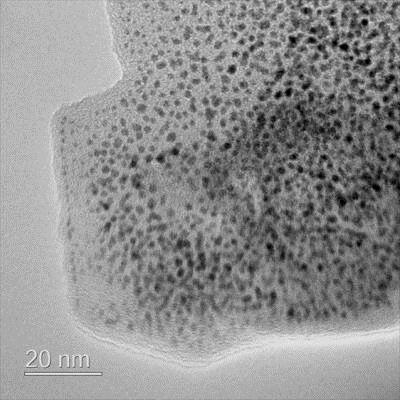A new study shows that graphene manufactured in a special way can be used to make more durable hydrogen fuel cells for automobiles. According to foreign media reports, the research teams at Queen Mary University of London and University College London (UCL) used a special scalable technology to produce graphene and use it for research and development. Hydrogen fuel cell catalyst. Experiments show that, compared with existing catalysts, this graphene-based catalyst is more durable and has comparable performance. The hydrogen fuel cell combines hydrogen and oxygen with the help of a catalyst to convert chemical energy into electrical energy. Since the only by-product of this reaction is water, it is an efficient and environmentally friendly energy source. Among such hydrogen fuel cells, platinum is the most widely used catalyst, but its high cost is a big problem preventing the commercialization of hydrogen fuel cells. To solve this problem, commercial catalysts usually coat tiny platinum nanoparticles on a cheaper carbon carrier, but this material has poor durability and greatly shortens the service life of current fuel cells. Previous studies have shown that graphene may be an ideal support material for fuel cells due to its corrosion resistance, large surface area and high conductivity. However, the graphene used in most experiments has many defects, which means that the expectation of improving its resistance has not been realized. However, this time the researchers proposed a technique that uses one-pot synthesis to produce high-quality graphene coated with platinum nanoparticles. The process can be expanded for large-scale production, allowing graphene-based catalysts to be widely used in the energy field. The researchers used the accelerated stress test recommended by the US Department of Energy (DOE) to conduct a large number of tests to confirm the durability of the graphene catalyst. Accelerated stress testing is deliberately in a short period of time to quickly force the catalyst in multiple cycles, so that scientists can evaluate the stability of new materials without testing fuel cells that have been running for months or years with this catalyst. Using this type of test, the scientists found that the activity loss of the newly developed graphene-based catalyst was reduced by about 30% during the same test cycle compared with the commercial catalyst. (Yu Qiuyun)
An electrostatic spray gun is a type of device used for applying a coating, such as paint or powder, to a surface. It operates by charging the particles of the coating material with a negative or positive electric charge, which then attract to the opposite charge of the surface being coated. In this article, we will explore what electrostatic spray guns are, how they work, and why they are important.
What is an electrostatic spray gun?
An electrostatic spray gun is a tool used to apply a charged coating to a surface by utilizing the principles of electrostatics. By imparting a charge to the coating material as it is sprayed, the particles of the coating become attracted to the surface of the object being sprayed, creating an even, uniform coating.
How do electrostatic spray guns work?
Electrostatic spray guns operate based on the principles of electrostatics, which states that particles that have the same charge will repel each other, while particles with opposite charges will attract. The electrostatic spray gun charges the paint, powder or other coating material with a negative or positive charge as it exits the nozzle, creating a fine spray of charged particles. When these charged particles reach the surface being coated, they are naturally attracted to the opposite charge of the surface, creating an even and uniform coating.
Why are electrostatic spray guns important?
Electrostatic spray guns play a significant role in the coating industry, primarily due to the following reasons:
Increased efficiency: Electrostatic spray guns deliver a more efficient transfer of the coating material to the surface being applied, resulting in a reduction of overspray and waste.
Improved quality: The charged particles delivered by an electrostatic spray gun create an even and uniform coating, resulting in a higher quality and more professional finish.
Environmentally friendly: Electrostatic spray guns reduce the amount of coating material necessary for a project, resulting in reduced waste and environmental impact.
In summary, electrostatic spray guns are essential tools in the coating industry. They offer increased efficiency, improved quality, and environmental benefits compared to traditional spray methods. When used correctly and maintained regularly, electrostatic spray guns can provide a valuable tool for a range of coating applications.
Electrostatic Paint Sprayer,Electrostatic Paint Gun,Electrostatic Paint Sprayer For Sale,Electrostatic Spray Gun Price Lizhi Precision Manufacturing Technology Co.,Ltd , https://www.lizhipartsmfg.com
(Image source: Queen Mary University of London)